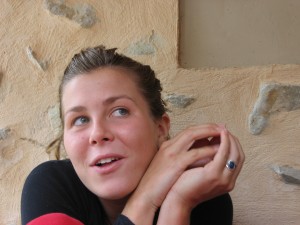
Today as I was swimming in the Mediterranean outside my door...
Today as I was swimming in the Mediterranean outside my front door I started thinking about writing this post, not because I was lucky enough to actually be diving with turtles today, but because the image of doing so is what was really the beginning of this whole adventure for me. Several years ago when I was the coordinator at the University Transition Program I was enticed into taking scuba diving lessons with a group of students. While people talked of the beautiful fish, coral and shells we would see under the waters of the Vancouver area, I started to envision myself now being able to dive with turtles. I love turtles and I’m fascinated by them but I’ve never seen a turtle in the wild so this was huge for me. So there I was approaching 50 years old, proud of myself for taking on something as challenging and scary as scuba diving was for me, and suddenly realizing that getting older wasn’t about moving towards the “golden years” of one’s life, but really about gaining the freedom and the confidence to do and be whatever we choose. I’m understanding the truth in Jenny Joseph’s poem which starts,
When I am an old woman, I shall wear purple with a red hat that doesn’t go, and doesn’t suit me.
It was probably around that time that I decided that it was time to learn Spanish. Truth be told, scuba diving was much less challenging than learning spanish is turning out to be, but I’m determined. Thus our decision to come to Spain. I’ve been “book learning” spanish now for a few years with some limited progress. So here (as they say in ShowTime Spanish) I’m moving it to the next level. Twice already since we arrived our friend Kim, who we’re staying with, has invited us out to her friend Marta’s for lunch.

Fideau is the catalan equivalent of paella, made with noodles instead of rice.
Two weeks ago when we first went to Marta’s we ordered in a huge big plate of fideua, the catalan equivalent of paella, made with noodles instead of rice. It was really amazing especially with the copious amounts of good spanish wine that we drank with it. We had a great long drawn out lunch that was so entertaining as we tried hard to speak Spanish with Marta who claim to speak very little English. Actually I think her English is much better than our Spanish but it was a great opportunity for us to practice. Kim and her daughter Pacha were really helpful, translating back and forth as we tried to elaborate on stories or whenever something got far too silly to possibly explain in a language we just don’t speak that well.
Pacha speaks Spanish beautifully, often correcting her mom. Plus she’s fun to watch because she is so very expressive, using her hands, her shoulders and pretty much all of her body for emphasis.

We all love to watch Pacha talk. She speaks so beautifully and is so expressive.
Hannah enjoyed sitting across the table from Pacha and taking a ton of pictures.
Did I mention that there were also two 14 year old boys at the lunch? Hannah later was invited back to Victor’s birthday party but it was late on a Saturday night and short of us hanging out somewhere not to far away whilst Hannah partied we really had no way of getting her home, so she passed. She would have enjoyed the chance to meet more teenagers. If you aren’t attending school in an area, we’re learning that it is quite hard to make friends.
Later in the day we took the new super tunnel up island to the lovely little town of Soller (google it! More on Soller another day). From there we drove part way down the west coast of the island just in time to stop Miramar and watch a beautiful sun set.


The train to Soller
We had such a great day on our first trip to Soller that less than a week later, when Lynn, our first Canadian visitor came we spent the day riding the beautiful 1918 wooden train back up from Palma to Soller. Then we walked down to the Port of Soller, a few kilometers away, sat and had yet another delicious lunch, this time on the beach, swam and then trammed back to Soller for the train back to Palma, all a very touristy thing to do but really a fun full day. Soller and the Port of Soller are both beautiful.

